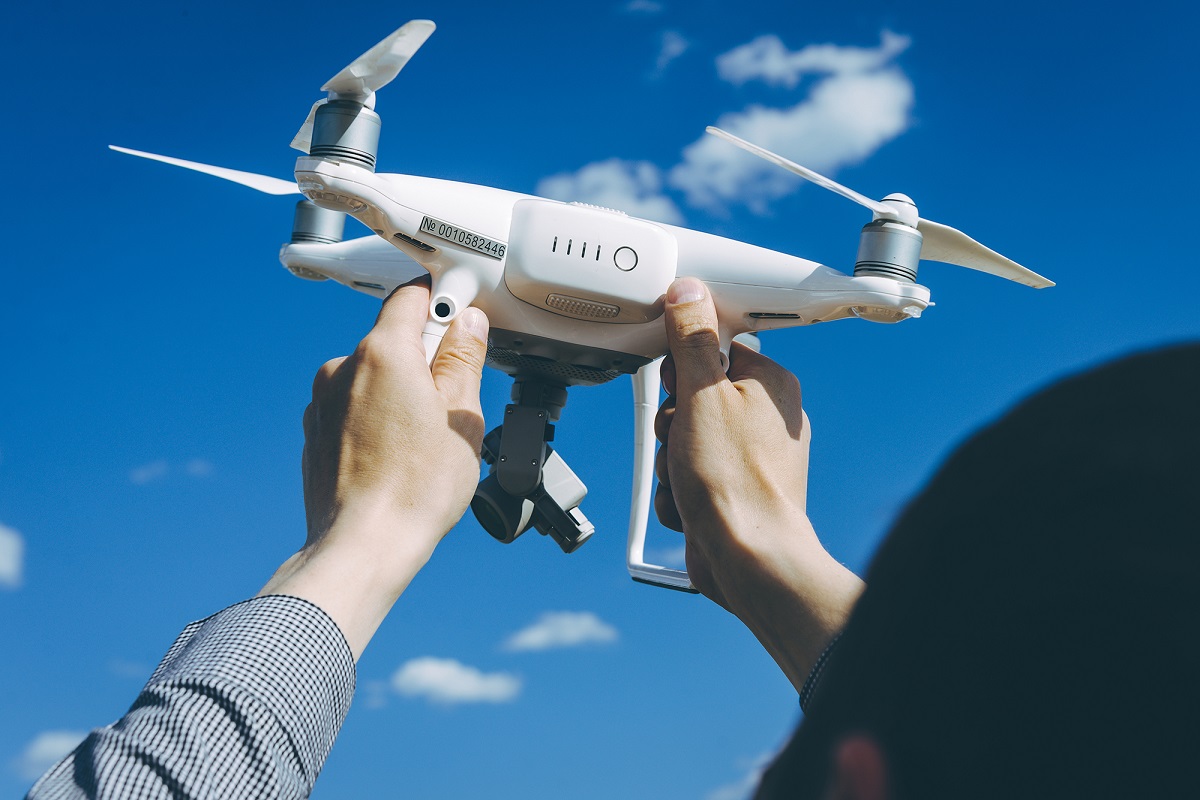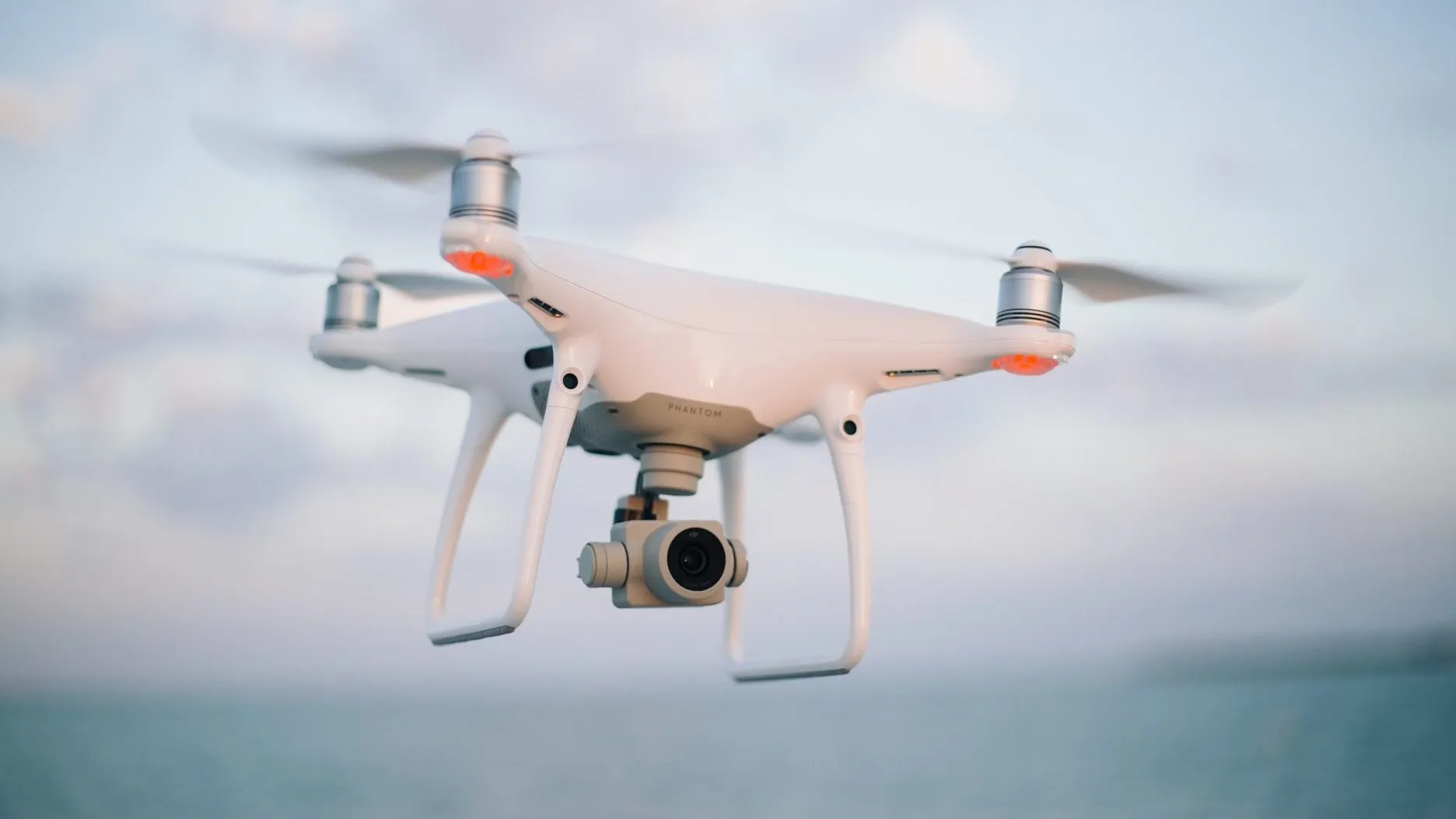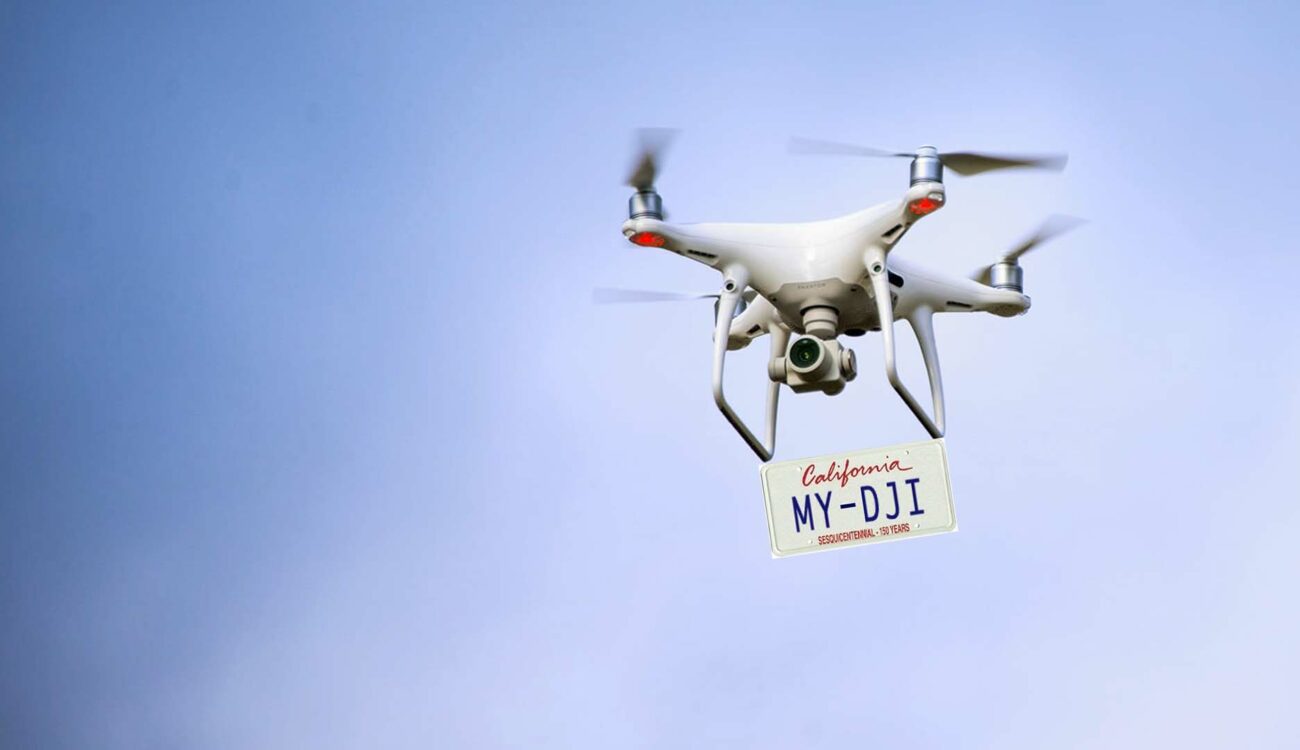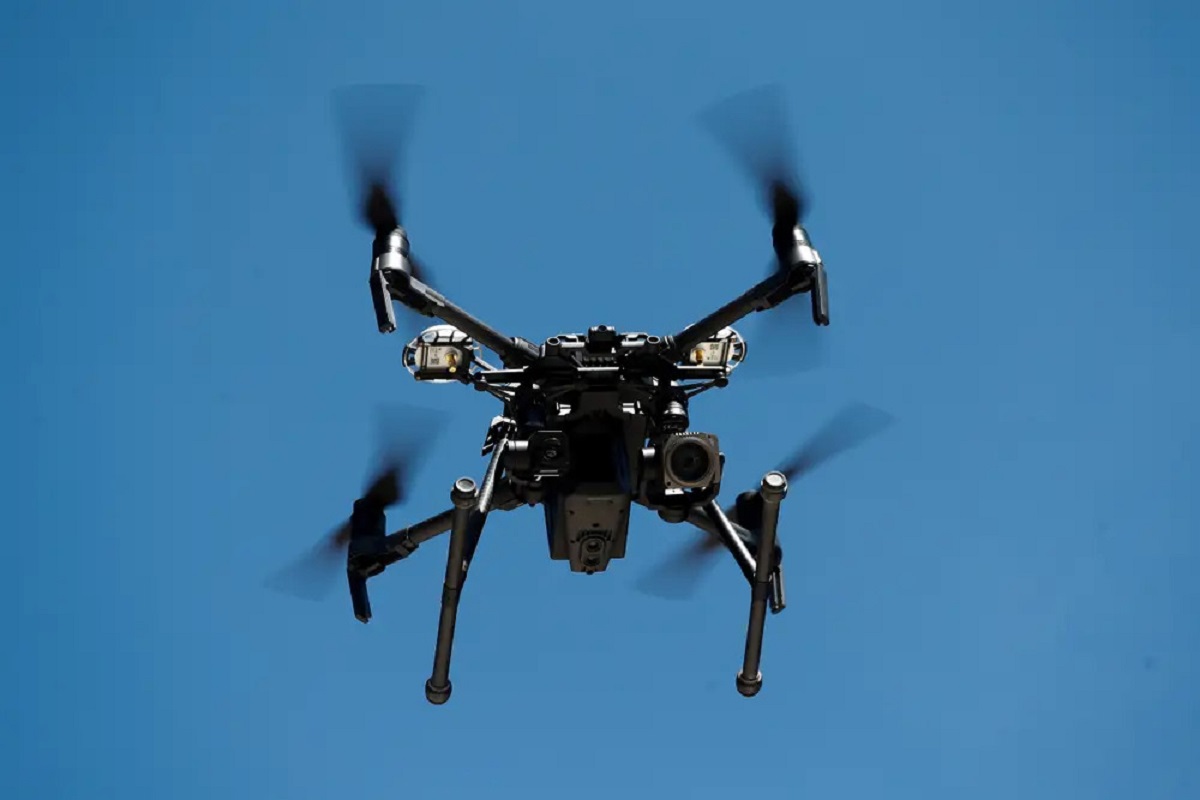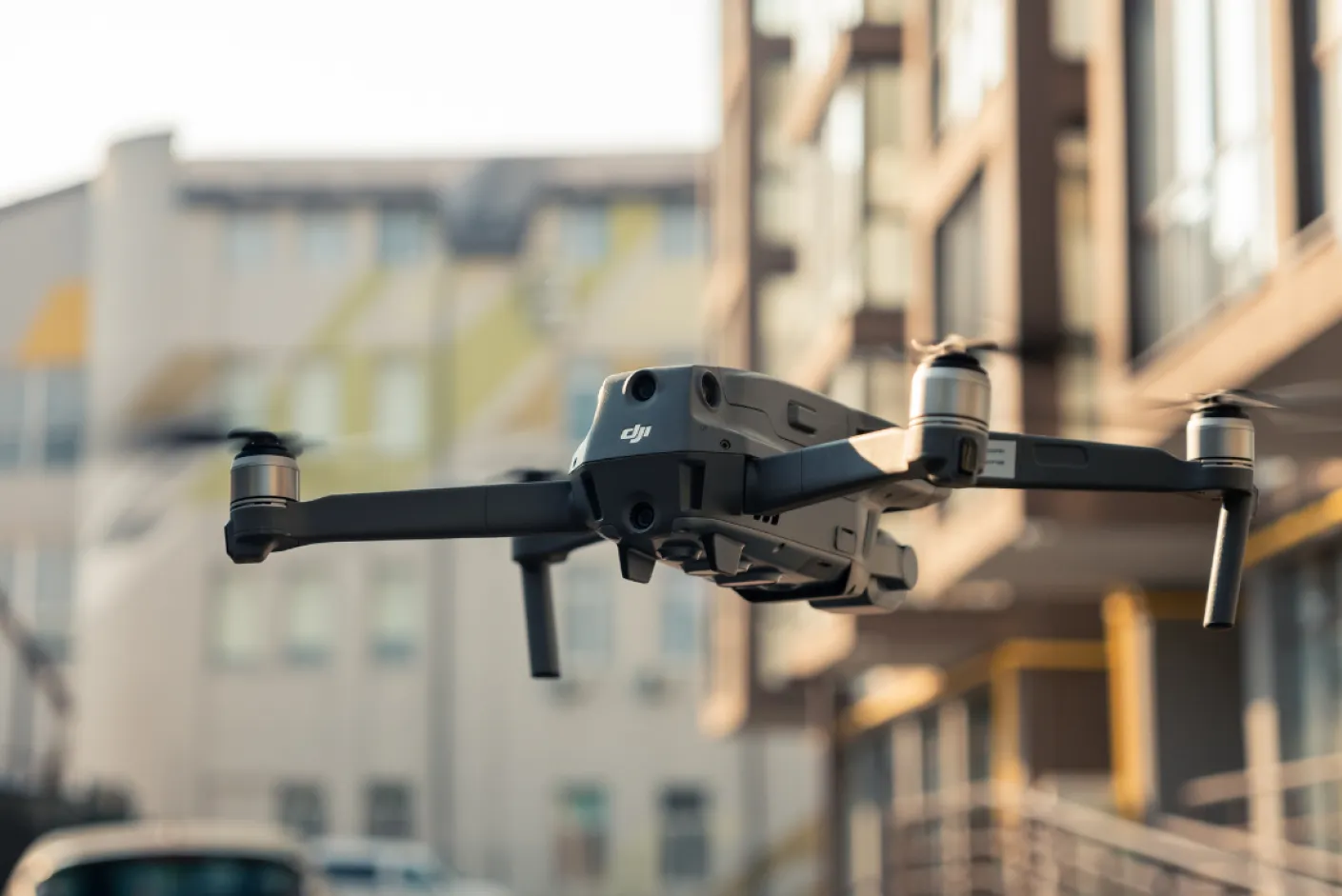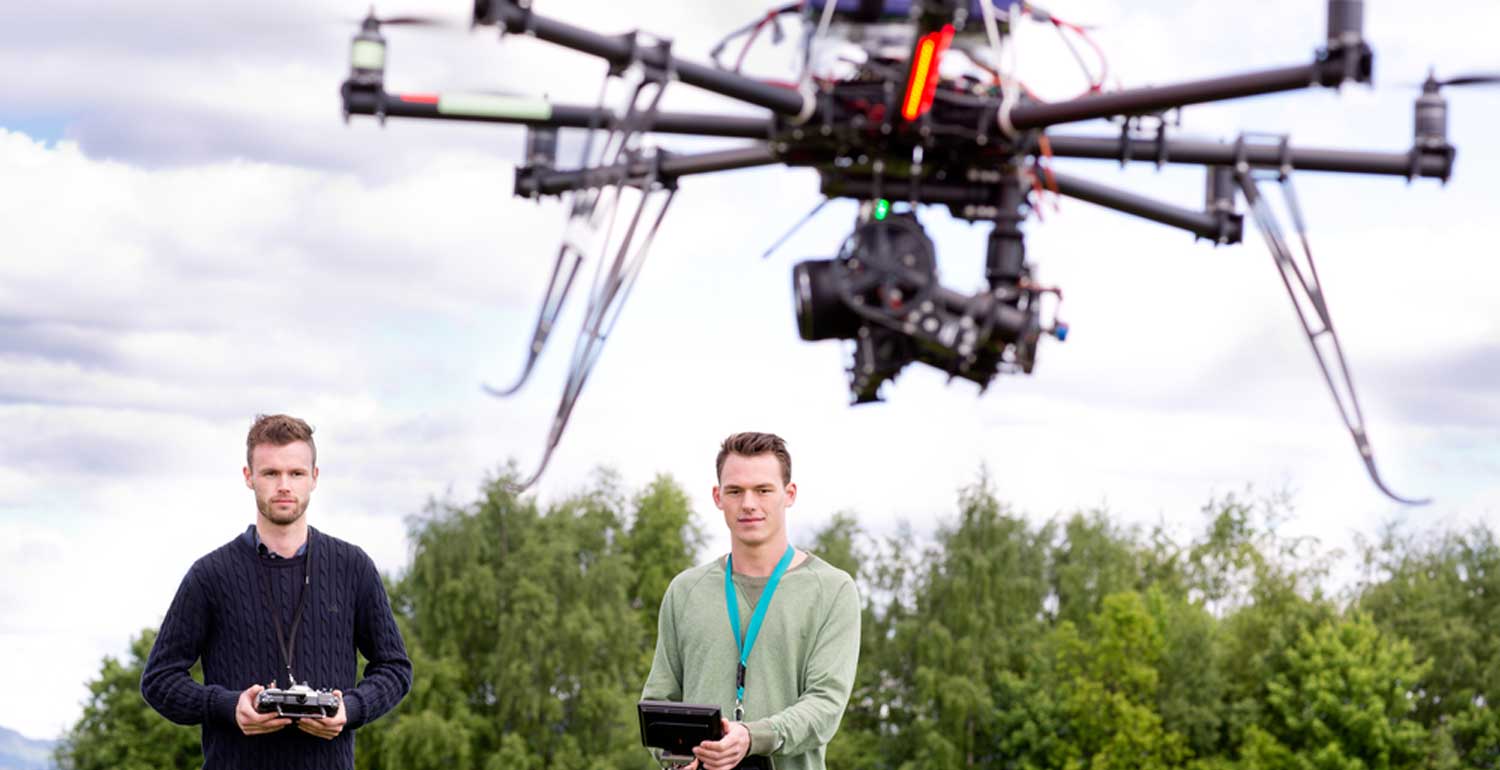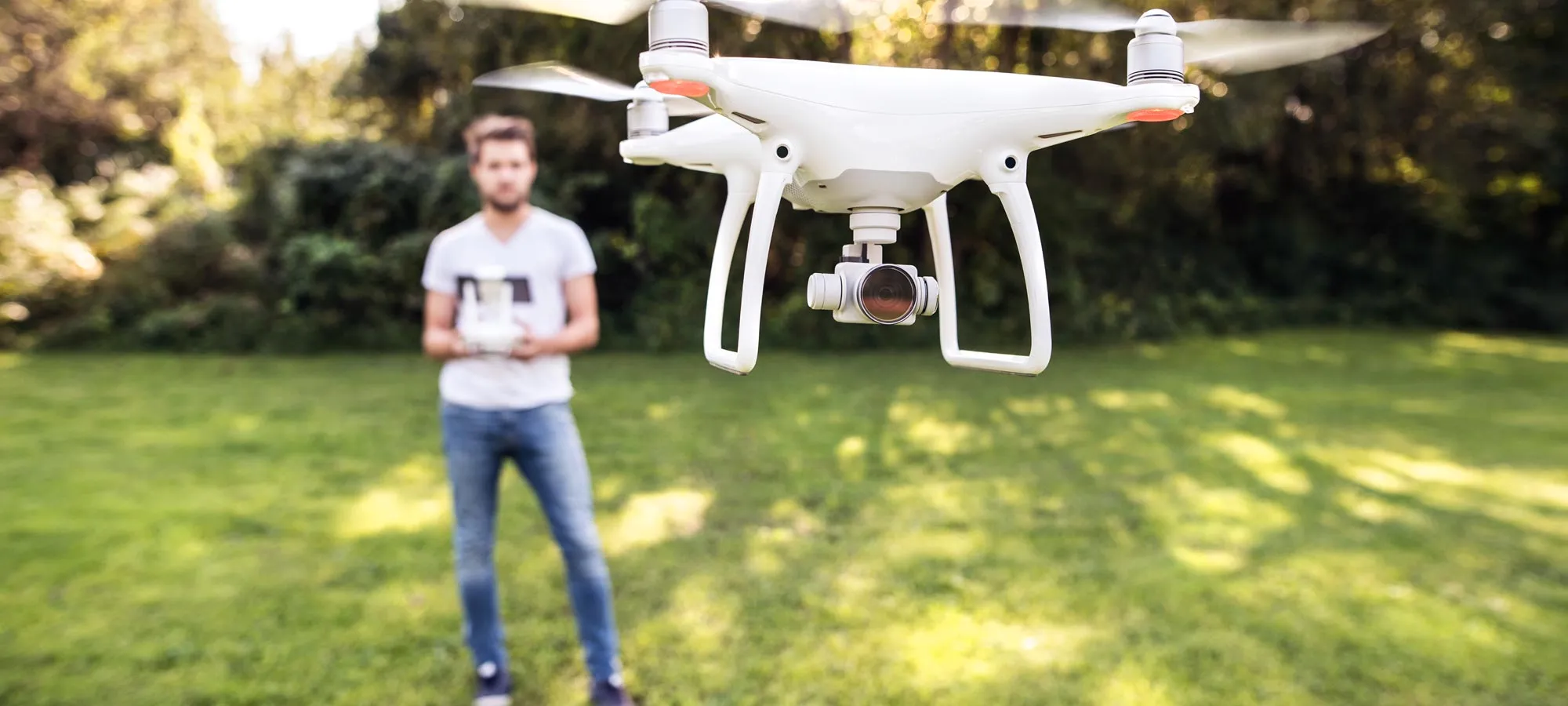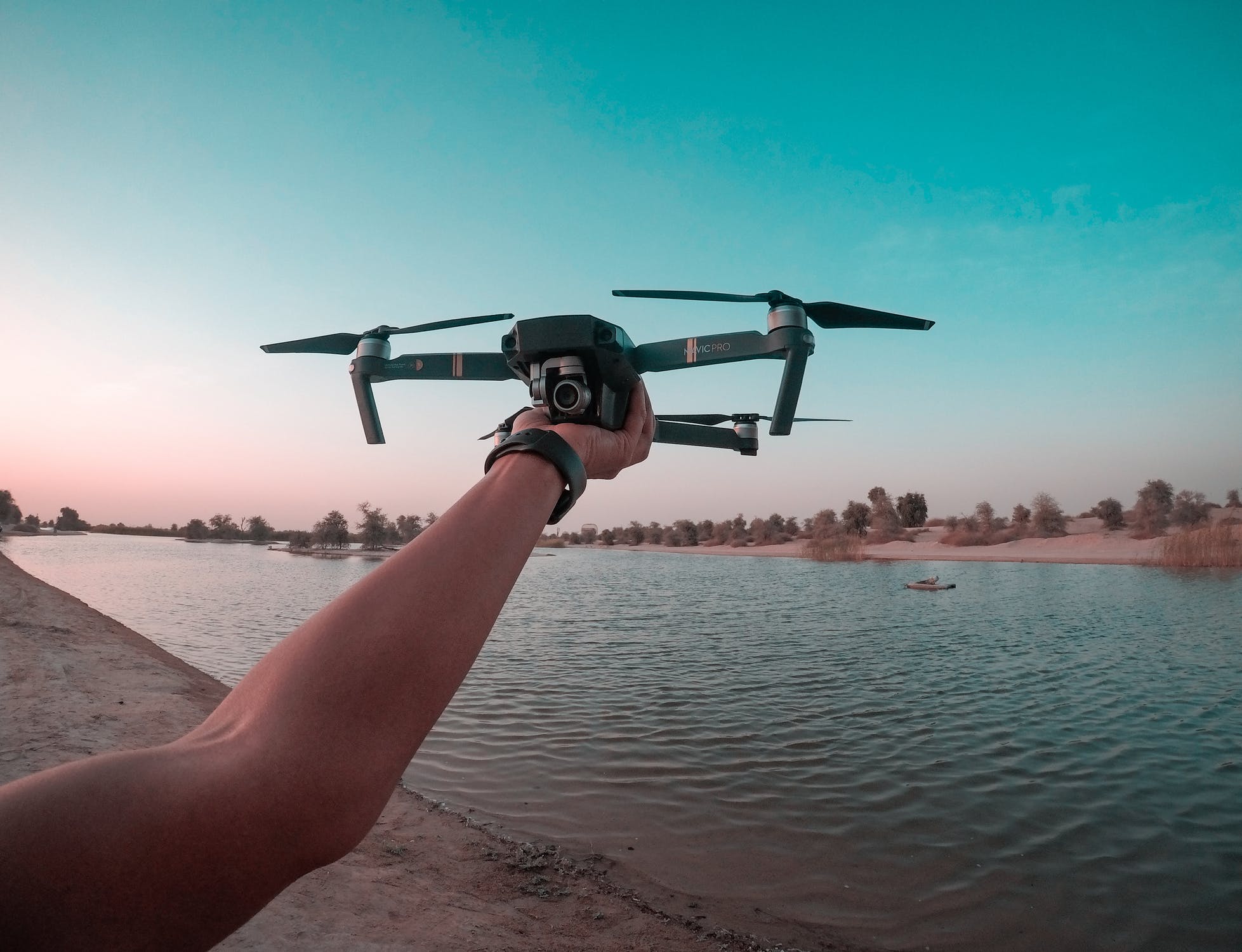Introduction
Welcome to the comprehensive guide on how to register a drone with the Federal Aviation Administration (FAA). Drones, also known as unmanned aerial vehicles (UAVs), have become increasingly popular for recreational, commercial, and even governmental purposes. However, as the popularity of drones continues to soar, it is important to understand and comply with the regulatory requirements set by the FAA.
Registering your drone with the FAA provides not only legal compliance but also a sense of responsibility and accountability as a drone pilot. It ensures that you are aware of the rules and regulations governing the safe and responsible operation of your drone. Additionally, registering your drone allows authorities to identify and trace drones in the event of any accidents or incidents.
Upon registration, you will receive a unique identification number that should be visibly displayed on your drone. This allows law enforcement officials or other pilots to easily identify your drone and contact you if necessary. Failure to register your drone may result in fines or other penalties imposed by the FAA.
Understanding the Importance of Registering Your Drone with the FAA
Registering your drone with the Federal Aviation Administration (FAA) is not just a bureaucratic formality; it serves a crucial purpose in ensuring the safety and accountability of drone operations. By registering your drone, you are demonstrating your commitment to following the guidelines and regulations set forth by the FAA, which are designed to promote safe and responsible drone use.
One of the primary reasons to register your drone is to prevent accidents and protect public safety. By registering your drone, you become an authorized pilot, and in doing so, you acknowledge that you are aware of the rules and regulations governing drone operations. This knowledge empowers you to operate your drone in a responsible manner, minimizing the risk of accidents that could potentially harm people or property.
Another important aspect of drone registration is the ability to trace and identify your drone. With a registration number prominently displayed on your drone, it becomes easier for authorities to locate and contact you in the event of an incident or violation. This traceability enhances safety and enables swift resolution of any issues that may arise during drone operations.
Furthermore, registering your drone demonstrates your compliance with federal regulations and helps to establish a positive image for the drone community as a whole. By adhering to the guidelines and requirements set by the FAA, you contribute to the responsible integration of drones into the national airspace.
Registering your drone also provides you with legal protection. In the unfortunate event of an accident or dispute involving your drone, having proper registration documentation will serve as evidence of your lawful operation. This can help protect you from liability and ensure that you are treated fairly under the law.
Lastly, by registering your drone, you are participating in the ongoing development and improvement of drone regulations. The data collected from drone registrations helps the FAA in analyzing trends, ensuring airspace safety, and addressing any potential challenges or risks arising from the rapid growth of the drone industry. Your registration becomes a part of the collective effort to shape the future of drone operations in a responsible and sustainable manner.
Deciding Whether You Need to Register Your Drone
Before diving into the drone registration process, it is crucial to determine whether your drone needs to be registered with the Federal Aviation Administration (FAA). Not all drones require registration, so understanding the criteria for registration will help you determine if your specific drone falls under those guidelines.
The first factor to consider is the weight of your drone. As of the current FAA regulations, drones weighing between 0.55 pounds (250 grams) and 55 pounds (25 kilograms) must be registered. If your drone falls within this weight range, it is mandatory to register it with the FAA before operating it in the United States.
Another important consideration is the intended use of your drone. If you plan to fly your drone for recreational purposes only, you must register it. However, if you are using your drone for commercial purposes, such as aerial photography, surveying, or any other type of paid services, you must not only register it but also obtain a remote pilot certificate from the FAA. Commercial drone pilots must undergo additional training and pass a knowledge test to ensure they have the necessary skills to operate drones safely and responsibly.
It is also essential to note that if you own multiple drones, each one that meets the weight requirements and is operated for recreational or commercial purposes must be individually registered with the FAA. Each drone will receive a unique registration number, which must be displayed on the aircraft.
There are certain exceptions to drone registration, primarily for specific government entities and public agencies. Drones operated by the military, law enforcement agencies, and certain authorized government entities are exempt from registration requirements, although they still need to follow specific guidelines and obtain necessary clearances for their operations.
Lastly, even if your drone falls under the registration requirements, there are situations where temporary or special authorizations may exempt you from registering. For instance, if you are visiting the United States and plan to fly your drone within a limited timeframe, you might be eligible for a temporary registration waiver. It is essential to review the FAA regulations carefully or consult with a legal professional to determine if you qualify for any exemptions or waivers.
In summary, if your drone weighs between 0.55 pounds and 55 pounds and you plan to operate it for recreational purposes or as a commercial drone pilot, registering your drone with the FAA is mandatory. Understanding the specific requirements based on weight, purpose, and any exemptions will help you make an informed decision and ensure compliance with the FAA regulations.
Requirements for Registering a Drone with the FAA
Registering your drone with the Federal Aviation Administration (FAA) involves following a set of requirements to ensure compliance with the regulations. Understanding these requirements is essential to ensure a smooth and successful registration process for your drone.
The first requirement is that you must be at least 13 years old to register a drone with the FAA. If you are under the age of 13, a parent or legal guardian can register the drone on your behalf.
Another requirement is that your drone must weigh between 0.55 pounds (250 grams) and 55 pounds (25 kilograms) to be eligible for registration. Drones falling within this weight range must be registered regardless of their intended use, whether for recreational or commercial purposes.
When registering your drone, you will need to provide the necessary information, including your name, physical address, and email address. You will also need to provide a valid credit or debit card to pay the registration fee.
Keep in mind that if you are registering a drone for recreational purposes, you will need to provide a self-certification that you understand and will follow the safety guidelines and operating procedures outlined by the FAA. This self-certification emphasizes the importance of responsible drone operation and adhering to the regulations set forth by the FAA.
Furthermore, if you are registering a drone for commercial purposes, you must also obtain a remote pilot certificate. This requires passing a knowledge test to demonstrate your understanding of airspace regulations, safety protocols, and other aspects of operating a drone commercially. The remote pilot certificate validates your competence and ensures that you are equipped with the necessary skills to fly a drone for commercial purposes.
It is important to note that your registration will be valid for three years. Once the three-year period elapses, you will need to renew your registration to ensure continued compliance.
Overall, the key requirements for registering a drone with the FAA include meeting the age requirements, ensuring your drone falls within the weight range, providing accurate contact information, paying the registration fee, and fulfilling any additional requirements for commercial drone operations. By meeting these requirements, you can navigate the registration process smoothly and enjoy the benefits of owning and operating a registered drone.
Step-by-Step Guide to Registering Your Drone
Registering your drone with the Federal Aviation Administration (FAA) is a straightforward process that involves a few simple steps. By following this step-by-step guide, you can ensure that your drone is properly registered and compliant with FAA regulations.
Step 1: Gather the Required Information
Before starting the registration process, make sure you have the necessary information at hand. This includes your name, physical address, email address, and a credit or debit card for the registration fee payment.
Step 2: Access the FAA Drone Registration Website
Go to the FAA’s official drone registration website. The website provides a user-friendly interface for registering your drone and will guide you through the process.
Step 3: Choose the Appropriate Registration Category
On the registration website, you will be prompted to select the proper registration category for your drone. Depending on the purpose of your drone (recreational or commercial), select the appropriate option.
Step 4: Create an Account
If you don’t already have an account on the FAA’s registration website, you will need to create one. This will require providing your email address and creating a password for login purposes.
Step 5: Enter Your Personal Information
Enter your personal information as prompted, including your name and physical address. Ensure that you provide accurate information to avoid any issues or delays with the registration process.
Step 6: Provide Drone Details
Next, you will need to provide details about your drone, such as the make, model, and serial number if applicable. This information helps the FAA keep a record of the registered drones and ensures traceability.
Step 7: Review and Confirm
Once you have entered all the required information, take a moment to review your registration details. Make sure that everything is accurate and double-check for any errors or typos.
Step 8: Pay the Registration Fee
Complete the registration process by paying the required registration fee using a valid credit or debit card. The current registration fee is minimal and valid for three years.
Step 9: Receive Your Drone Registration Number
After successfully completing the registration and payment process, you will receive a unique drone registration number from the FAA. This number should be kept accessible as it will need to be displayed on your drone.
Step 10: Label Your Drone
Continuing with the registration requirements, you must label your drone with the received registration number. This number should be visible on the drone and easily accessible for identification.
By following these ten steps, you can successfully register your drone with the FAA. Remember to adhere to the FAA’s regulations and guidelines for drone operation to ensure safety, responsibility, and compliance with the law.
Completing the FAA Drone Registration Form
Completing the FAA drone registration form is a crucial step in the process of registering your drone. By carefully filling out the form, you provide the necessary information for the Federal Aviation Administration (FAA) to record and identify your drone. Follow this guide to ensure that you complete the FAA drone registration form accurately and efficiently.
Step 1: Access the FAA Drone Registration Website
Visit the official FAA drone registration website and log in to your account. If you do not have an account, create one following the instructions provided on the website.
Step 2: Provide Your Personal Information
Enter all required personal information on the registration form, including your full name, physical address, and email address. It is crucial to input accurate information to avoid any issues with your registration.
Step 3: Specify Your Purpose for Drone Operation
Indicate whether you plan to operate your drone for recreational or commercial purposes. Select the appropriate option to ensure that your registration is classified correctly.
Step 4: Detail Your Drone Information
Provide details about your drone, such as the make, model, and any applicable serial numbers. This information helps the FAA identify your specific drone and maintain accurate records.
Step 5: Agree to the Safety Acknowledgement
Read and acknowledge the safety guidelines and operating procedures outlined by the FAA. By agreeing to this acknowledgement, you confirm that you understand and will follow these guidelines during drone operations.
Step 6: Confirm and Submit
Review the information you have entered on the registration form and ensure its accuracy. Once you are confident that all the information is correct, click on the “Confirm” or “Submit” button to submit your registration form.
Step 7: Pay the Registration Fee
After submitting the form, you will be prompted to pay the registration fee using a valid credit or debit card. The current registration fee is reasonable and typically valid for a three-year period.
Step 8: Receive Your Drone Registration Number
Upon completing the registration process and payment, you will receive a unique drone registration number. This number serves as your identification as a registered drone owner and must be displayed on your drone.
Remember to save a copy of the completed registration form and keep it accessible for future reference. It acts as proof of your registration and indicates that you are operating your drone legally in compliance with the FAA’s requirements.
By following these steps, you can complete the FAA drone registration form accurately and efficiently. Registering your drone with the FAA helps promote responsible drone operation and ensures compliance with regulations governing the use of drones in the national airspace.
Paying the Registration Fee
Once you have completed the necessary steps to register your drone with the Federal Aviation Administration (FAA), the final stage of the process is paying the registration fee. It is important to fulfill this requirement to ensure your drone is properly registered and compliant with FAA regulations. Here is a guide on how to pay the registration fee for your drone.
Step 1: Access the FAA Drone Registration Website
Visit the official FAA drone registration website and log in to your account using your credentials. If you do not have an account, follow the instructions provided to create one.
Step 2: Select the Appropriate Registration Category
If you have not already chosen the registration category for your drone (recreational or commercial) during the registration process, select the appropriate option now. This ensures that the correct registration fee is applied to your drone.
Step 3: Review Your Registration Details
Take a moment to review the registration details on the website, including your personal information and drone details. Confirm that all the information is accurate before proceeding to pay the registration fee.
Step 4: Proceed to Payment
Once you have confirmed that the registration details are correct, click on the “Proceed to Payment” or similar button to initiate the payment process. You will be directed to a secure payment gateway.
Step 5: Choose Your Payment Method
Select the preferred payment method from the options provided. This typically includes credit cards and debit cards. Enter the necessary payment details, such as the card number, expiration date, and security code.
Step 6: Complete the Payment
Follow the prompts provided by the payment gateway to complete the transaction. Depending on the payment provider you choose, this may involve confirming the payment amount and authorizing the transaction.
Step 7: Receive Confirmation
Once the payment is successfully completed, you should receive a confirmation message or email indicating that your payment has been processed. This confirms that your drone registration fee has been paid.
Remember to keep a record of the payment confirmation for future reference. It is an essential piece of documentation that validates your payment and serves as proof of your registration fee payment.
By following these steps, you can easily pay the registration fee for your drone and complete the registration process with the FAA. Ensuring that the registration fee is paid in a timely manner demonstrates your commitment to complying with the regulations and operating your drone responsibly within the national airspace.
Receiving Your Drone Registration Number
After successfully registering your drone with the Federal Aviation Administration (FAA) and paying the registration fee, you will receive a unique drone registration number. This number is a crucial identifier that links your drone to your registration information on file with the FAA. Here’s what you can expect when it comes to receiving your drone registration number.
Automatic Generation of Registration Number
Once you have completed the registration process and payment, the FAA will automatically generate a unique registration number for your drone. This number is specific to your drone and serves as your identification as a registered drone owner.
Registration Certificate and Confirmation
The FAA will provide you with a registration certificate and confirmation upon the completion of registration. This documentation will include your name, drone registration number, and the date of registration. It may be available for download directly from the FAA’s drone registration website or sent to you via email.
Displaying the Registration Number
You are required to display your drone registration number on the exterior of your drone. It should be displayed in a location that is easily visible and readable without the need for any tools or disassembly of the drone. Common locations for displaying the registration number include the body or arms of the drone.
Labeling Requirements
When displaying your registration number on your drone, it’s important to adhere to the FAA’s labeling requirements. The number must be displayed prominently and should be clearly legible and permanently affixed to the drone. Using labels, engraving, or other durable marking options are acceptable methods for displaying the registration number.
Using the Registration Number for Identification
The registration number acts as a unique identifier for your drone. In the event of any incidents or accidents, the registration number helps authorities to identify and trace the drone back to its owner. It is essential to have the registration number readily available on your drone to ensure easy identification if required.
Renewal and Updating of Registration Number
Drone registrations are valid for a period of three years. It is your responsibility to renew your registration within the specified timeframe to ensure continued compliance. If you sell or transfer ownership of your drone, it is necessary to update the registration information with the FAA to reflect the new owner’s details.
Receiving and properly displaying your drone registration number is a crucial part of the registration process. It not only demonstrates your compliance as a responsible drone owner but also facilitates the traceability and identification of your drone within the national airspace.
Labeling Your Drone with the Registration Number
Labeling your drone with the unique registration number provided by the Federal Aviation Administration (FAA) is a necessary step in the registration process. Properly displaying the registration number ensures compliance with FAA regulations and facilitates the identification and traceability of your drone. Here’s a guide on how to label your drone with the registration number.
Permanent and Legible Marking
The FAA requires that the registration number be clearly displayed on the exterior of your drone in a location that is easily visible and readable. It is essential to use a permanent and legible marking method to ensure that the registration number remains intact and readable over time.
Engraving or Durable Labeling
One option for labeling your drone is through engraving the registration number directly onto the drone’s body or an easily accessible part. Engraving ensures long-lasting marking and makes it tamper-resistant. Alternatively, you can use durable labels that adhere firmly to the surface of your drone. These labels should be of high quality, weather-resistant, and securely affixed to the drone.
Clear and Visible Location
The registration number should be placed in a location that is clear and easily visible without the need for any tools or disassembly of the drone. Common locations for displaying the registration number include the body or arms of the drone. Avoid positioning the registration number in areas that are prone to damage or easily covered by accessories like propeller guards or landing gear.
Size and Contrast
The FAA requires that the registration number be clearly legible and easily discernible from a reasonable distance. The size of the registration number should ensure its visibility based on the dimensions of your drone. The contrast between the color of the registration number and the background should be sufficient to make it clearly stand out.
Additional Identification Information
While the FAA only requires the registration number to be displayed on your drone, you may also consider adding additional identification information, such as your name or contact details. However, ensure that any additional information does not obstruct or diminish the visibility of the registration number.
Maintaining the Labeling
It is important to regularly inspect the labeling on your drone and ensure that it remains intact and legible. If the label becomes damaged or faded over time, it is your responsibility to re-mark or replace it to maintain compliance with FAA regulations.
By properly labeling your drone with the registration number, you demonstrate your compliance with FAA regulations and contribute to the responsible and accountable use of drones in the airspace. Take the time to carefully label your drone, ensuring that the registration number is clearly visible and easily identified by authorities and other drone operators.
Renewing Your Drone Registration
Renewing your drone registration with the Federal Aviation Administration (FAA) is an important step to maintain the legality and compliance of your drone operations. The FAA requires drone owners to renew their registrations every three years to ensure up-to-date and accurate information. Here’s what you need to know about renewing your drone registration.
Timeline for Renewal
Drone registrations are valid for a period of three years. It is essential to keep track of the expiration date of your registration to ensure timely renewal. The FAA typically sends renewal reminders via email in the months leading up to expiration.
Renewal Process
To renew your drone registration, you must log in to your account on the FAA drone registration website using your credentials. Navigate to the renewal section and follow the instructions provided. Review and update your registration information as necessary, including your personal details and any changes in your drone fleet.
Registration Fee
When renewing your drone registration, a renewal fee is required. The current fee is generally the same as the initial registration fee and can be paid securely online using a valid credit or debit card. Upon successful payment, your registration will be renewed for another three years.
Updating Your Information
During the renewal process, it is vital to review your registration information and make any necessary updates. Ensure that your personal details, such as your name and contact information, are accurate and up to date. Additionally, if you have acquired new drones or no longer own certain drones, update your drone fleet information accordingly.
Compliance with Current Regulations
When renewing your drone registration, it is essential to reaffirm your commitment to comply with current FAA regulations and safety guidelines. By completing the renewal process, you acknowledge that you will continue to operate your drone in a responsible and lawful manner, adhering to all applicable rules and regulations.
Retaining Proof of Renewal
After renewing your drone registration, it is crucial to keep a copy of the confirmation or receipt as proof of renewal. This documentation serves as evidence that your drone is legally registered with the FAA and demonstrates your compliance in the event of any inquiries or inspections.
Timely Renewal Considerations
Avoid delaying the renewal of your drone registration to ensure continuous compliance. Failing to renew your registration in a timely manner may result in penalties or legal consequences, including fines and restrictions on drone operations.
Renewing your drone registration is a necessary step to maintain compliance and keep your drone operations legal. By promptly renewing your registration every three years, you contribute to the responsible and accountable use of drones within the national airspace.
Tips for Flying Your Registered Drone Responsibly
Once you have registered your drone with the Federal Aviation Administration (FAA), it’s important to fly it responsibly and in accordance with the guidelines set by the FAA. Practicing responsible drone operation not only ensures the safety of people and property but also maintains a positive reputation for the drone community as a whole. Here are some valuable tips to help you fly your registered drone responsibly.
1. Know and Follow FAA Regulations: Familiarize yourself with the FAA’s regulations for drone operation, including airspace restrictions, height and distance limits, and no-fly zones. Follow these regulations to maintain safety and compliance during your flights.
2. Respect Privacy: Always respect the privacy of others when flying your drone. Avoid recording or capturing images in areas where individuals have a reasonable expectation of privacy, such as private residences and backyards.
3. Fly in Approved Areas: Fly your drone in approved areas such as designated drone parks, flying clubs, or other authorized locations. Be aware of any local ordinances or regulations specific to your area that may impact where and how you can fly your drone.
4. Maintain Line of Sight: Keep your drone within your line of sight at all times during flight. This allows you to maintain control and avoid potential hazards or collisions with other objects or aircraft in the vicinity.
5. Avoid Crowded Areas and Airports: Stay away from crowded areas, stadiums, sporting events, and airports. Flying near these locations can pose a risk to people and interfere with manned aircraft operations.
6. Fly in Good Weather Conditions: Choose to fly your drone in good weather conditions with clear visibility and stable winds. Adverse weather conditions such as rain, windstorms, or fog can affect your drone’s performance and pose safety risks.
7. Be Mindful of Wildlife: Consider the impact of your drone on wildlife and their habitats. Do not disturb or harass wildlife during drone operations, particularly in sensitive areas or protected habitats.
8. Be Prepared for Emergencies: Have a plan in place for emergencies or unexpected circumstances. Be aware of your surroundings, know how to land your drone safely if necessary, and always carry a fully charged fire extinguisher for any potential battery-related incidents.
9. Practice Safe Battery Handling: Follow proper battery handling procedures to prevent accidents or fires. Ensure that your drone’s batteries are charged and in good condition, and store spare batteries safely and away from flammable materials.
10. Continue Learning: Stay informed about emerging regulations, technological updates, and best practices for drone operation. Continuously educate yourself to improve your skills, knowledge, and understanding of responsible drone flying.
By following these tips, you can fly your registered drone in a responsible and safe manner. Remember, responsible drone operation not only protects the welfare of others but also contributes to the continued growth and positive perception of drones as valuable tools in various industries.
Conclusion
Registering your drone with the Federal Aviation Administration (FAA) is a vital step in ensuring responsible and compliant drone operations. By going through the registration process, you not only abide by the regulations set by the FAA but also contribute to the safety and accountability of the drone community as a whole.
Understanding the importance of drone registration and the requirements involved is essential. It provides you with legal protection, helps prevent accidents, promotes responsible drone use, and facilitates identification and traceability of your drone when necessary. Additionally, registering your drone demonstrates your commitment to operating within the guidelines established by the FAA and supports the ongoing development of drone regulations.
Once you have registered your drone, it’s crucial to fly it responsibly. Adhering to FAA regulations, respecting privacy, and flying in approved areas are fundamental principles to follow. Maintaining line of sight, avoiding crowded areas and airports, and being mindful of wildlife are also critical considerations for safe and responsible drone operations.
By following these guidelines and staying updated with the FAA’s regulations and best practices, you can enjoy the benefits of drone ownership while ensuring the safety and well-being of others. Remember to renew your registration when required and label your drone with the registration number as a visible indication of your compliance.
Ultimately, responsible drone flying fosters a positive image for the drone community, encourages further integration of drones into various industries, and promotes the realization of the full potential of this innovative technology.







